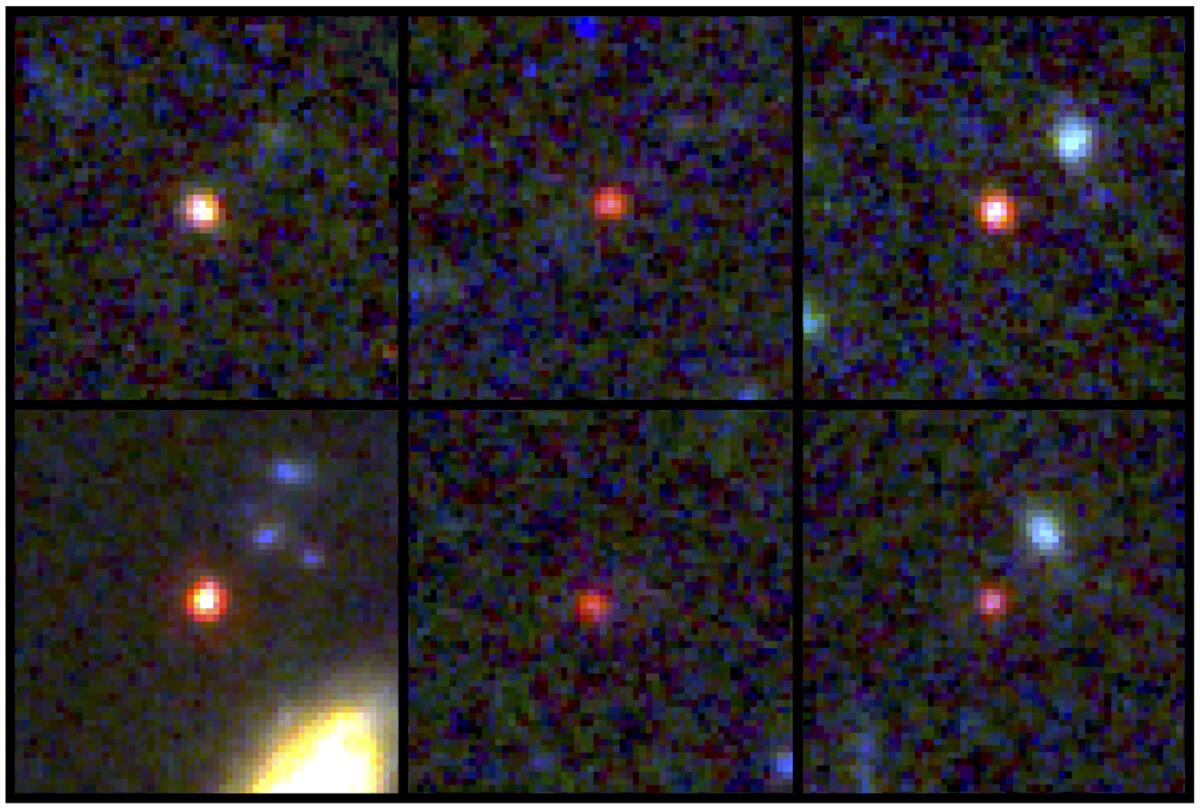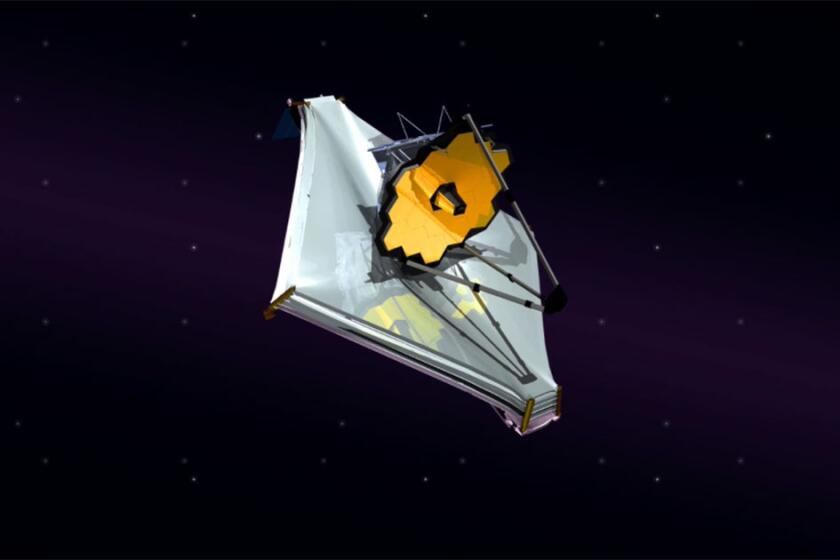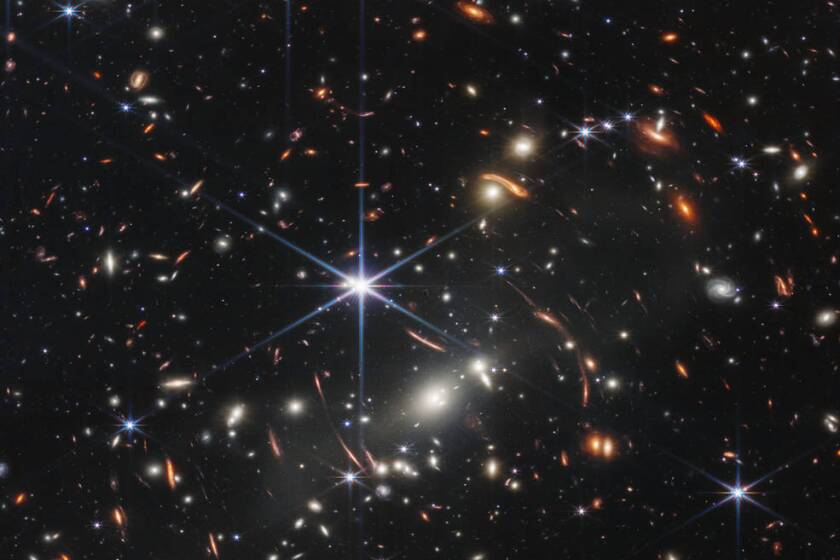Space telescope spots massive galaxies near cosmic dawn and blows astronomers’ minds

- Share via
CAPE CANAVERAL, Fla. — Astronomers have discovered what appear to be massive galaxies dating back to within 600 million years of the big bang, suggesting the early universe may have had a stellar fast-track that produced these “monsters.”
While the new James Webb Space Telescope has spotted even older galaxies, dating to within a mere 300 million years of the beginning of the universe, it’s the size and maturity of these six apparent mega-galaxies that stunned scientists. They reported their findings Wednesday in the journal Nature.
Lead researcher Ivo Labbe of Australia’s Swinburne University of Technology and his team expected to find little baby galaxies this close to the dawn of the universe — not these whoppers.
“While most galaxies in this era are still small and only gradually growing larger over time,” he said, “there are a few monsters that fast-track to maturity. Why this is the case or how this would work is unknown.”
Each of the six objects looks to weigh billions of times more than our sun. In one of them, the total weight of all its stars may be as much as 100 billion times greater than our sun, the scientists reported.
The telescope will be able to peer into the farthest reaches of space. The data it collects will allow scientists to better understand the formation of stars and galaxies.
Labbe said he and his team didn’t think the results were real at first — that there couldn’t be galaxies as mature as our own Milky Way so early in time — and they still need to be confirmed. The objects appeared so big and bright that some members of the team thought they had made a mistake.
“We were mind-blown, kind of incredulous,” Labbe said.
Pennsylvania State University’s Joel Leja, who took part in the study, calls them “universe breakers.”
“The revelation that massive galaxy formation began extremely early in the history of the universe upends what many of us had thought was settled science,” Leja said in a statement. “It turns out we found something so unexpected it actually creates problems for science. It calls the whole picture of early galaxy formation into question.”
These galaxy observations were among the first data set that came from the $10-billion Webb telescope, launched just over a year ago. It’s considered the successor to the Hubble Space Telescope, coming up on the 33rd anniversary of its launch.
Unlike Hubble, the bigger and more powerful Webb can peer through clouds of dust with its infrared vision and discover galaxies previously unseen. Scientists hope to eventually observe the first stars and galaxies formed following the creation of the universe 13.8 billion years ago.
The first image from NASA’s James Webb Space Telescope shows innumerable galaxies swirling around a central point, like the light thrown off from a disco ball.
The researchers still are awaiting official confirmation through sensitive spectroscopy, careful to call these candidate massive galaxies for now. Leja said it’s possible that a few of the objects might not be galaxies, but obscured supermassive black holes.
While some may prove to be smaller, “odds are good at least some of them will turn out to be” galactic giants, Labbe said. “The next year will tell us.”
One early lesson from Webb is “to let go of your expectations and be ready to be surprised,” he said.








